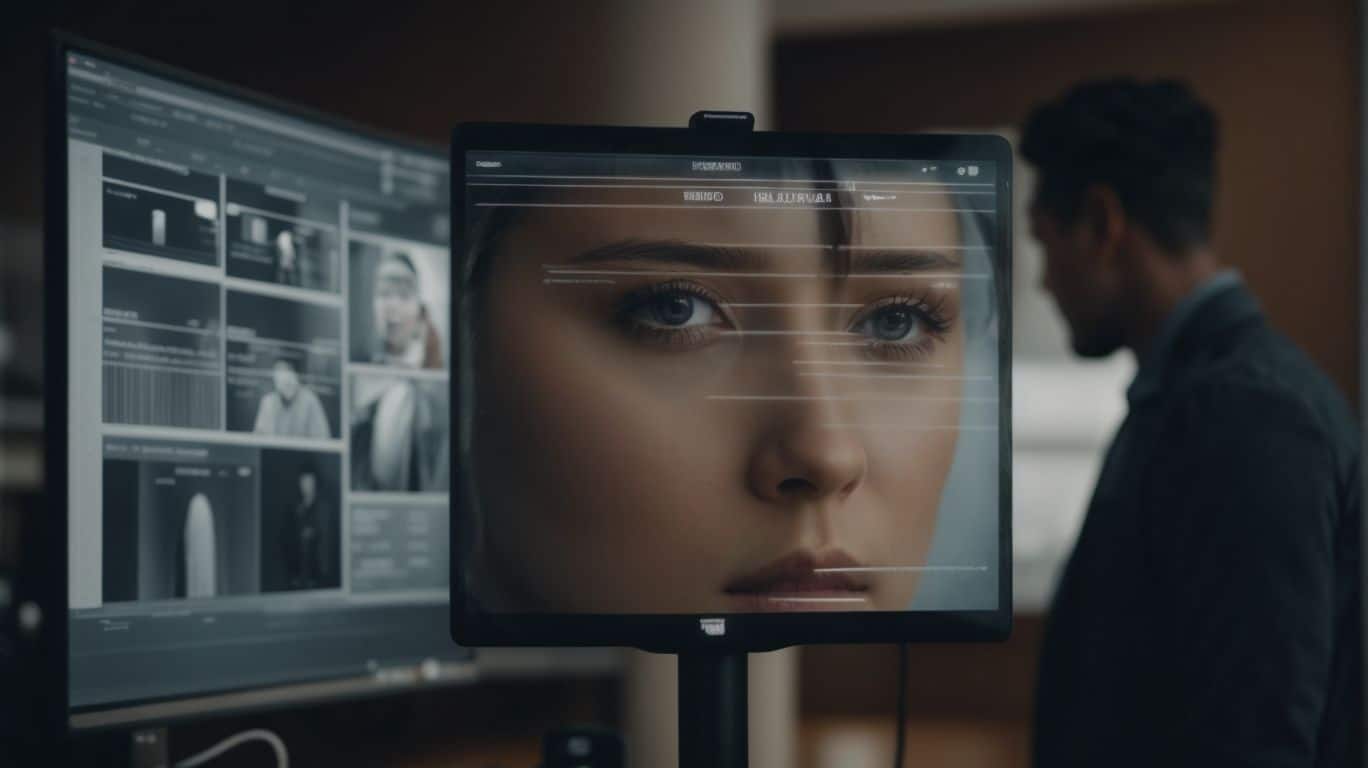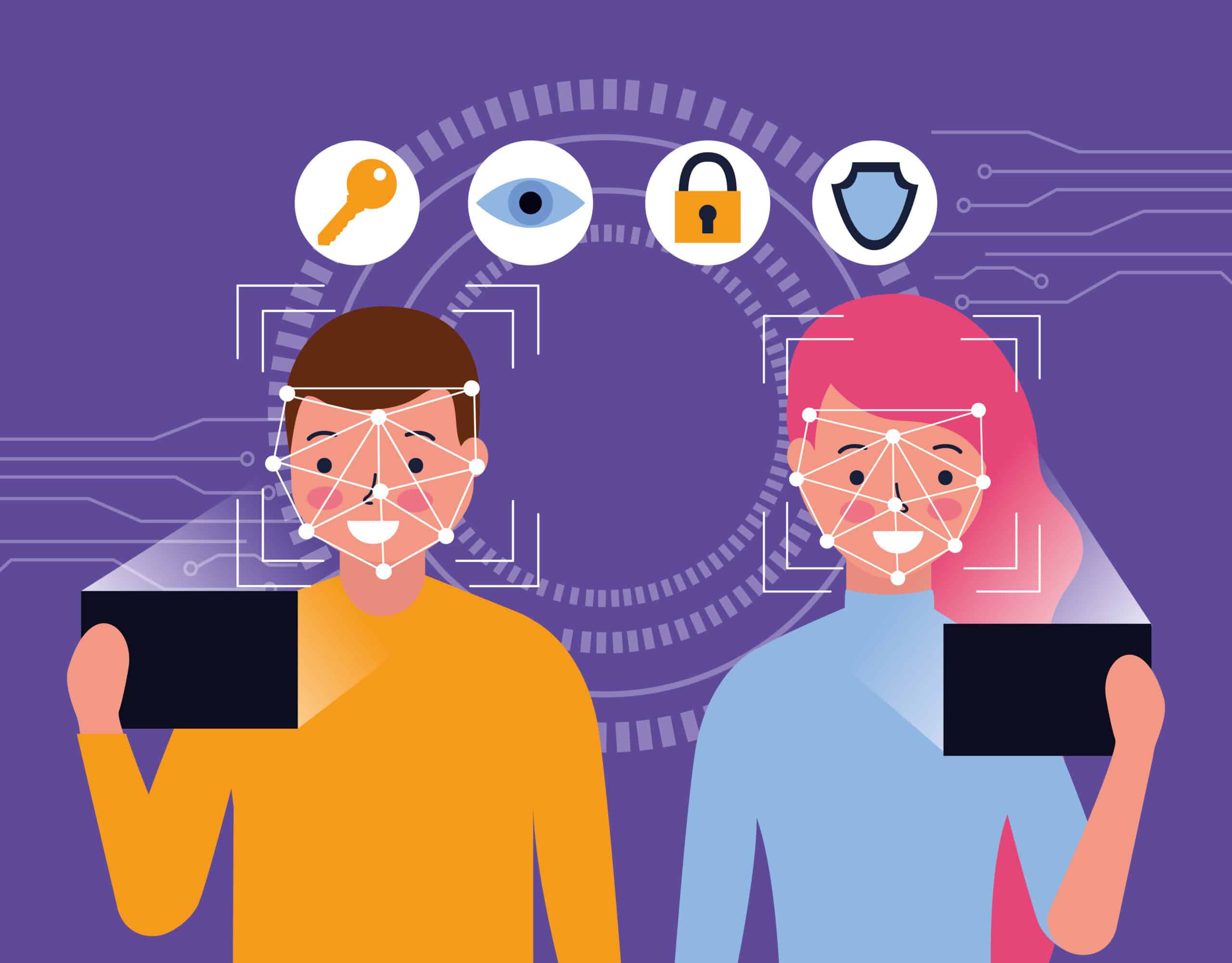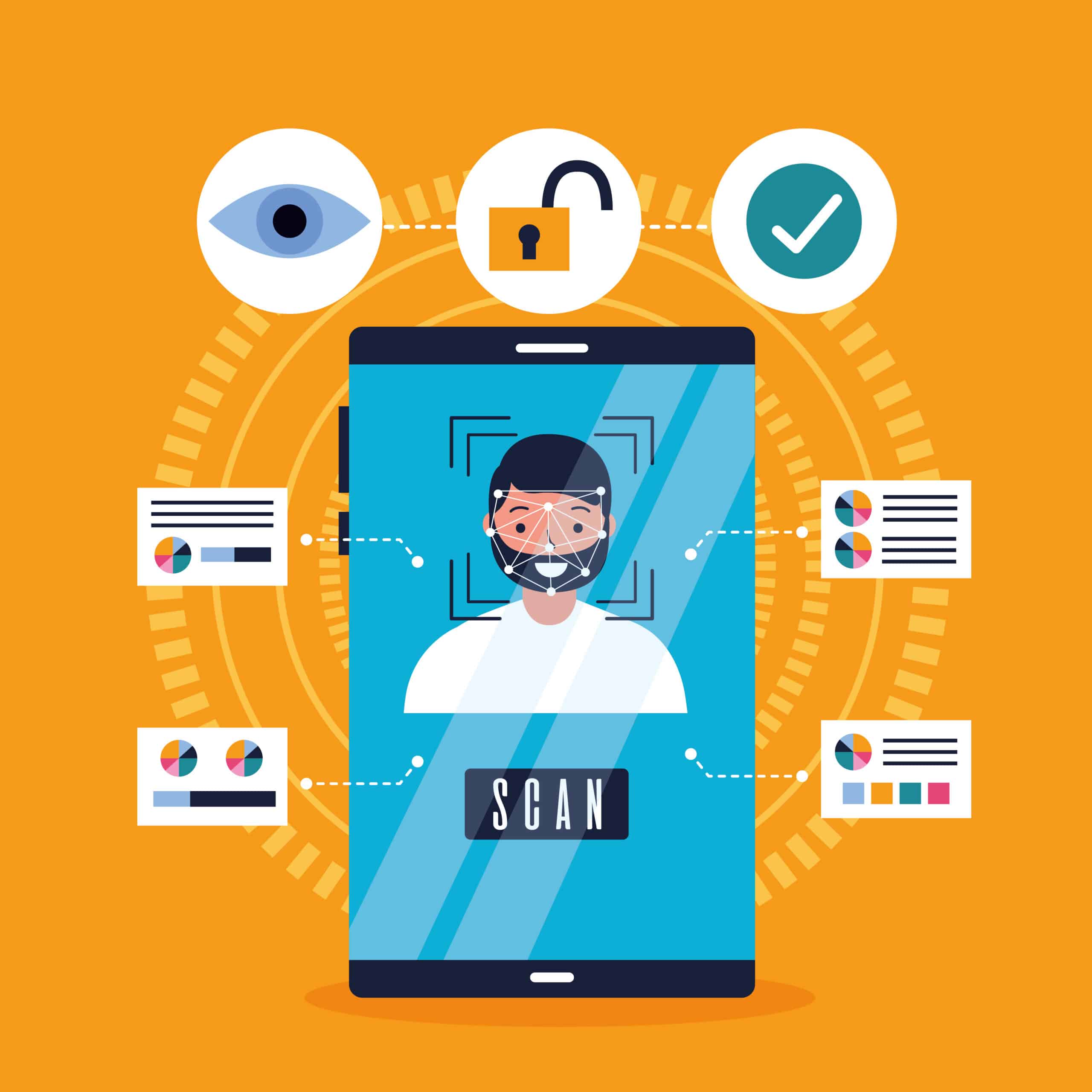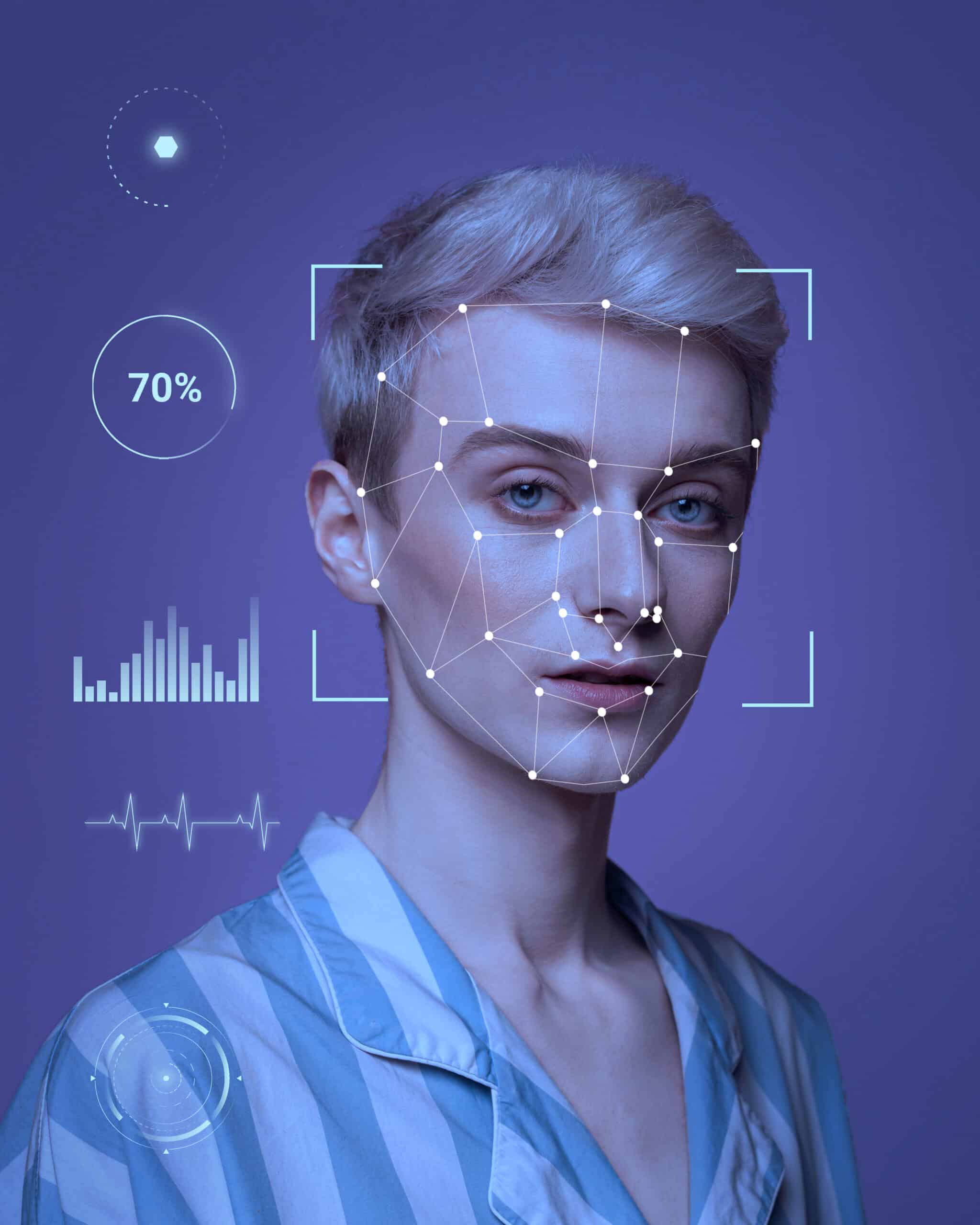Revolutionizing Identity Verification: The Power of Facial Recognition Technologies


In today’s digital age, the importance of identity verification cannot be overstated. As technology continues to evolve, facial recognition technology has emerged as a cutting-edge solution for verifying individuals’ identities.
We will explore the ins and outs of facial recognitvion technology, its benefits, concerns, and alternatives in the realm of identity verification. Let’s dive in and uncover the latest innovations in this field.
What Is Identity Verification?
Identity verification is the process of confirming a person’s identity and ensuring that they are who they claim to be.
This process is crucial in various sectors such as financial institutions, healthcare, and government agencies where security and trust are paramount. Also, with the advancement of technology, methods like two-factor authentication, biometric recognition, and blockchain verification have become key in enhancing the accuracy and reliability of identity verification processes.
Digital identity plays a vital role in today’s security landscape, offering a secure and convenient way for individuals to prove their identity online. Biometric data, such as fingerprints or facial recognition, is increasingly being used for authentication, providing a high level of security by uniquely identifying individuals based on their physiological or behavioral characteristics.
Why Is Identity Verification Important?
Identity verification plays a crucial role in safeguarding against identity theft, ensuring security, and enhancing user experience.
By requiring individuals to verify their identities through various means such as document verification, biometric authentication, and multi-factor authentication, businesses can significantly reduce the risk of fraudulent activities and unauthorized access. Additionally, these verification processes add layers of security, making it more difficult for malicious actors to impersonate legitimate users. As a result, sensitive information remains protected, maintaining trust in online transactions.
Seamless user experiences are enabled by incorporating user-friendly verification methods that prioritize both security and convenience, leading to increased customer satisfaction and loyalty.
What Is Facial Recognition Technology?
Facial recognition technology involves the automated identification and verification of individuals by analyzing and comparing their facial features.
- This innovative technology operates by capturing and mapping unique facial characteristics such as the distance between the eyes, nose, and mouth, as well as the shape of the jawline and cheekbones.
- Biometric verification methods in facial recognition systems use this data to create a digital template of an individual’s face, which is then compared against a database of stored templates to confirm or deny identity.
- Artificial intelligence and machine learning algorithms play a crucial role in continuously improving these systems, allowing for greater accuracy in matching faces and enhancing overall security measures.
How Does Facial Recognition Technology Work?
Facial recognition technology works by capturing and analyzing unique facial features of individuals, creating a facial template that is compared against existing databases using advanced machine learning algorithms.
These algorithms are designed to identify key facial landmarks such as the distance between the eyes, nose shape, and the contours of the mouth. By mapping these features onto a digital template, the system can recognize specific individuals based on their unique facial characteristics.
Machine learning plays a crucial role in this process by continuously refining and improving the recognition accuracy through pattern recognition. Also, the sophistication of these algorithms enables highly accurate facial matching, even in challenging conditions such as varying lighting or facial expressions.
What Are The Advantages Of Facial Recognition Technology?
Facial recognition technology offers numerous advantages such as enhanced security, high accuracy in identification, automation of verification processes, and continuous innovation in identity authentication solutions.
Facial recognition systems have shown remarkable accuracy in identifying individuals, significantly reducing the margin of error compared to traditional methods. The reliability of these systems in swiftly confirming identities has revolutionized security measures in various sectors. By automating the verification process, facial recognition technology not only improves efficiency but also minimizes the risk of human error. The constant advancements in identity authentication through facial recognition have paved the way for cutting-edge security solutions that are adaptive and secure.
What Are The Applications Of Facial Recognition Technology In Identity Verification?
Facial recognition technology finds diverse applications in identity verification, offering robust solutions for biometric authentication and technological advancements.
By utilizing facial recognition technology, individuals can securely access their personal devices, online accounts, and physical spaces without the need for traditional forms of identification such as passwords or keys. This innovative approach enhances security measures by uniquely verifying identities based on distinct facial features. Biometric authentication solutions, integrated with facial recognition technology, enable seamless verification processes, ensuring a quick and reliable way to confirm identities. The technological features driving this innovation include machine learning algorithms, infrared cameras, and sophisticated facial detection capabilities that improve accuracy and efficiency in identity verification.
Airport Security
Facial recognition technology is extensively utilized in airport security to enhance identity verification processes, aligning with the latest trends in security technology and utilizing advanced facial recognition software.
This technology offers a seamless and efficient way to screen passengers by comparing their facial features with biometric data stored in secure databases.
Emerging trends in the field include the integration of facial recognition with self-service check-in kiosks and boarding gates to expedite the passenger processing flow.
Airlines and airports are constantly exploring innovative ways to leverage facial recognition for not only security purposes but also to improve overall customer experience and operational efficiency.
The use of sophisticated algorithms and AI-powered software solutions plays a crucial role in ensuring the accuracy and reliability of facial recognition systems in diverse airport settings.
Online Banking and Transactions
Facial recognition technology is integrated into online banking and transactions to ensure compliance with identity verification regulations, prevent fraud, and deliver the benefits of enhanced security through facial recognition.
By utilizing facial recognition technology, financial institutions can strengthen their security measures by adding an additional layer of authentication. This technology enhances the user experience by providing a seamless and convenient way to access accounts securely. Compliance with strict verification standards is crucial in the digital age where cyber threats and online scams are prevalent.
By incorporating facial recognition into the authentication process, banks can significantly reduce the risk of unauthorized access and fraudulent activities, safeguarding customers’ sensitive information and financial assets.
Law Enforcement and Public Safety
Law enforcement and public safety agencies leverage facial recognition technology to address identity verification challenges, balancing the need for privacy protection with seamless integration of facial recognition technologies.
Facial recognition has revolutionized the way law enforcement agencies identify suspects and enhance public safety. By analyzing unique facial features, authorities can quickly match individuals to criminal databases, aiding in the swift apprehension of suspects.
Concerns regarding the accuracy and potential biases of facial recognition algorithms have raised ethical debates. The storage and handling of sensitive biometric data present significant privacy challenges.
Despite these concerns, the integration of facial recognition solutions offers a robust tool for precise and efficient identity verification in crime prevention and public safety operations.
Healthcare
Healthcare settings utilize facial recognition technology to implement secure identity verification methods, ensuring biometric security through advanced facial recognition systems.
This technology plays a crucial role in safeguarding patient information by accurately verifying the identity of individuals accessing healthcare facilities. By using unique facial features for authentication purposes, healthcare organizations can enhance their security measures and prevent unauthorized access to sensitive data.
Facial recognition systems provide a seamless and efficient way to authenticate patients, staff, and visitors, reducing the risk of data breaches and ensuring compliance with privacy regulations. With the ability to quickly and accurately verify identities, healthcare facilities can improve their overall security posture and ensure the confidentiality of patient records.
What Are The Concerns Surrounding Facial Recognition Technology?
Despite its benefits, facial recognition technology raises concerns related to privacy, identity theft risks, potential biases, and inaccuracies in identification.
One of the major implications of facial recognition technology on privacy is the collection and storage of personal data without individuals’ explicit consent or knowledge. This data can be vulnerable to misuse, hacking, or unauthorized access, posing serious security threats. Cybercriminals may heighten identity theft risks by exploiting loopholes in facial recognition systems to impersonate individuals. The potential biases in these algorithms can lead to discriminatory outcomes, especially affecting marginalized communities. The challenges of inaccuracies in identification processes further complicate matters, as errors can result in false identifications and wrongful accusations.
Privacy and Data Protection
Privacy and data protection are central concerns in the deployment of facial recognition technology, necessitating compliance with identity verification standards to safeguard individual privacy and maintain facial recognition privacy.
Facial recognition applications have become increasingly prevalent in various sectors, from security and law enforcement to banking and retail. The ability to accurately identify individuals based on facial features brings with it a host of potential benefits, but also raises significant ethical and privacy considerations.
In this digital age, where personal data is a valuable commodity, ensuring that facial recognition technology is developed and utilized in a secure and responsible manner is crucial. This requires implementing robust protocols to protect the privacy of individuals whose data facial recognition systems capture and process.
Bias and Inaccuracies
Bias and inaccuracies in facial recognition technology pose significant challenges, requiring continual refinement of algorithms to mitigate biases and improve accuracy in identification processes.
These issues have raised concerns about the potential consequences of misidentification, leading to calls for increased transparency and accountability in the deployment of facial recognition systems. Algorithmic biases can result in the misclassification of individuals, especially from marginalized groups, highlighting the need for diverse datasets and rigorous testing protocols to address these disparities. Researchers and developers are actively working on enhancing inclusivity and fairness in algorithmic decision-making by developing standardized benchmarks and ethical guidelines.
Misuse and Abuse
Concerns regarding the misuse and abuse of facial recognition technology highlight the importance of robust identity verification protocols to prevent unauthorized access and protect against potential misuse of facial recognition data.
Without stringent identity verification measures in place, there is a heightened risk of individuals gaining unauthorized access to sensitive facial recognition data. Also,severe breaches of privacy and security could occur, with nefarious actors exploiting personal information for malicious purposes.
By implementing strict protocols for identity verification, organizations can significantly reduce the chances of misuse and abuse of this powerful technology.
Ethical considerations also play a crucial role in ensuring that facial recognition deployments prioritize the protection of individuals’ rights and privacy.
What Are The Alternatives To Facial Recognition Technology In Identity Verification?
In addition to facial recognition technology, other alternatives for identity verification include biometric authentication, multi-factor authentication, document verification, and knowledge-based authentication.
Biometric authentication involves the use of unique biological characteristics such as fingerprints or iris scans to confirm an individual’s identity. This method provides a more secure way of verifying an identity as these biological traits are difficult to forge.
Adding an extra layer of security, multi-factor authentication requires users to provide multiple forms of verification, like a password, token, or fingerprint, minimizing the risk of unauthorized access.
Document verification involves analyzing official documents like passports or driver’s licenses to validate a person’s identity, offering a tangible and reliable means of identification.”
Biometric Authentication
Biometric authentication offers a secure method for identity verification, adhering to compliance standards and incorporating biometric liveness detection to ensure the presence of a live individual during verification.
This advanced technology provides numerous advantages in verifying individuals’ identities. One of the key benefits is the heightened security it provides compared to traditional methods like passwords or PINs, as biometric traits are unique and cannot be easily duplicated. By utilizing biometric authentication, organizations can enhance data protection and prevent unauthorized access more effectively.
Biometric liveness detection adds another layer of security by verifying that the person undergoing verification is physically present and actively participating in the process, reducing the risks of spoofing attempts. The robustness of biometric authentication in securely verifying identities makes it a reliable option for various industries where data security is paramount.
Multi-Factor Authentication
Multi-factor authentication enhances identity verification by requiring users to provide multiple forms of verification, aligning with user authentication standards and compliance regulations for secure identity verification processes.
By incorporating multiple factors such as something a user knows (like a password), something they have (such as a security token), and something they are (such as biometric data), multi-factor authentication adds layers of security to the verification process. This method reduces the risks associated with relying solely on passwords, which can be easily compromised.
User authentication plays a crucial role in ensuring that only authorized individuals gain access to sensitive information or systems, reducing the likelihood of unauthorized breaches. Compliance requirements, like GDPR and HIPAA, mandate the use of robust identity verification mechanisms to protect personal data and maintain secure access.
Document Verification
Document verification is a reliable method for identity verification, offering compliance solutions and utilizing tools to authenticate official documents and verify the identity of individuals.
During the process of document verification, individuals must submit various official documents such as government-issued IDs, passports, and utility bills. Also, Advanced technology scans and analyzes these documents to ensure their authenticity and validity.
One of the key solutions provided by document verification is the ability to meet regulatory compliance requirements by verifying the identity of customers or users. Commonly used tools such as OCR (Optical Character Recognition) software and biometric authentication verify the details on official documents and match them with the information provided by the individual.
By facilitating the verification process, document verification plays a crucial role in preventing identity theft and ensuring the security of transactions and interactions.
Knowledge-Based Authentication
Knowledge-based authentication relies on personal information to verify identities, meeting compliance requirements and adhering to best practices for secure identity verification.
- This method involves verifying individuals by asking them to answer questions based on their personal information, such as previous addresses, financial history, or other details only the true identity owner should know. By using this approach, businesses can enhance security and reduce the risk of fraudulent activities.
- It is crucial for organizations to handle personal information securely to maintain the trust of their customers and comply with regulatory standards. Implementing stringent security measures and regularly updating authentication processes constitute key components of effective knowledge-based authentication practices.
Frequently Asked Questions
What is Facial Recognition Technology and how is it used in Identity Verification?
Facial Recognition Technology is a biometric software that analyzes facial features and patterns to identify individuals. Identity Verification uses it to compare a person’s facial features to a reference image or database, confirming their identity.
What are the benefits of using Facial Recognition Technology in Identity Verification?
Facial Recognition Technology offers a fast, accurate, and contactless way to verify an individual’s identity. It also eliminates the need for physical documents or IDs, making the process more convenient and efficient.
How does Facial Recognition Technology ensure the security and privacy of personal information?
Advanced algorithms in Facial Recognition Technology convert facial features into a unique code for comparison, without storing actual images, thereby ensuring the security and privacy of personal information.
Can Facial Recognition Technology be fooled by photos or videos?
Advanced Facial Recognition Technology utilizes 3D mapping and depth analysis to prevent photos or videos from fooling it. It also requires the individual to perform specific actions, such as blinking or turning their head, to ensure a live person is being verified.
What are some potential concerns or limitations of using Facial Recognition Technology in Identity Verification?
One concern is the accuracy of the technology, as it may have difficulty recognizing individuals with certain facial features. The technology may use individuals’ data without their consent or knowledge, raising privacy concerns.
Are there any regulations or guidelines in place for the use of Facial Recognition Technology in Identity Verification?
Yes, many countries have regulations and guidelines in place for the use of Facial Recognition Technology in Identity Verification. For example, the European Union’s General Data Protection Regulation (GDPR) sets strict standards for the collection and processing of personal data through facial recognition.



